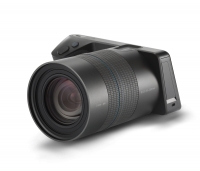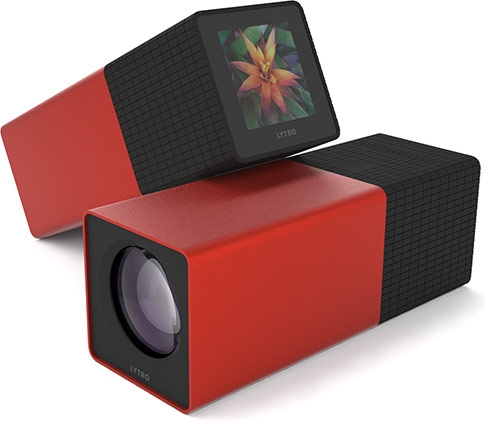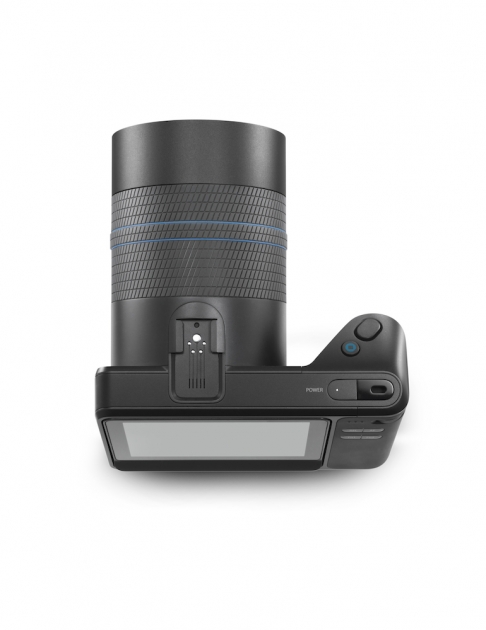Lytro takes light field photography to the next level with the Illum camera
posted Tuesday, April 22, 2014 at 7:46 AM EST

When Lytro announced its first light field camera back in 2011, it set the photography world abuzz with its new technology that permitted a photographer to change the focus point of a photograph after it was taken. The excitement only lasted for a short while though, as the camera didn't really prove to be useful for general photography. Besides its unusually shaped body and lack of controls, the major letdown of the original Lytro camera was its resolution, which couldn't even match most cellphone cameras of the time.
Meanwhile, others picked up on the idea of refocusing after shooting, and built their own technologies around it. Most recently, HTC announced the new One smartphone with its dual cameras, one of which records depth information about the scene photographed. Using this information. the resulting images can be refocused just like those from the Lytro, but they can also be enhanced with effects that can be applied to fore- and background independently.

Today, Lytro announces a new generation of light field cameras with the Illum, the company's latest creation. And with it, it seems that Lytro is trying to take light field photography to the next level. Sporting a much more familiar body design that resembles a mirrorless camera, the Illum promises much higher resolution thanks to 40 megarays of light field information, as compared to the original Lytro camera's 11 megarays. Translated to a flat print, we're told the new Lytro can achieve 5 megapixels, compared to its predecessors 1.2 megapixel sensor. And while the lens is still a fixed f/2 zoom, it now sports a wider focal length range of 30-250mm.
The lens is marked with an unprecedented close-focusing distance of 0 mm, allowing for macro photography with a magnification of up to 1:3. We're uncertain, though, whether the close-focusing distance has anything to do with the lens itself doing any actual focusing, or rather with the fact that the desired focal point can be set after taking the exposure thanks to the fact that the Illum captures light from all distances essentially in the same way.

With its much more conventional – yet still rather avant garde – body, the Lytro Illum should be much easier to use than its quirky predecessor. Around the lens you'll find a zoom ring that activates the motorized zoom, as well as a focusing ring (which function we're not entirely sure). The rear of the camera is dominated by an unusually large tiltable 4" display, as well as a couple of buttons that let the user dial in some advanced settings such as exposure lock.
The top is also classically styled, sporting a flash hot-shoe, power-button, shutter button and a special button featuring the Lytro logo. With its more camera-like design, improved ergonomics, and more capable sensor, it appears that Lytro wants to win the hearts of those who haven't been won over by their light field technology. But even though the Illum's images offer some new features such as perspective change on top of the focus change, we're not entirely sure that's going to happen.

For one thing, the light field technology is still very much in its infancy, despite all advancements and improvements that Lytro has implemented in the Illum. The main problem with this technology still is, and will be for a while, its lack of resolution. Another problem is the fact that outside of a computer, pictures taken with a light field camera make no sense at all, as it is their interactive nature that defines them. And for printing, the resolution simply doesn't suffice.
On top of that, the Illum isn't really affordable, coming in at a retail price of US$1,599. When it starts shipping in July of 2014, we're skeptical it will see any broad adoption. For the general consumer, while being a fun toy, the technology doesn't really have any purpose. And as we saw with the original Lytro camera, the fascination with the refocusing (and now added perspective shifting) technology quickly wears off.
Those buying Lytro's cameras will probably either be die-hard fans, people with a general interest in new (and quirky) technologies or aficionados with a heavy wallet. The technology is highly fascinating and exciting, but it still has some way to go before it becomes worthwhile for the majority of photographers. And it's not clear that Lytro will be the company to see broad success with post-capture refocusing, as the technology is findings its way into cellphones. All that said, we can't wait to get our technophile hands on this product.